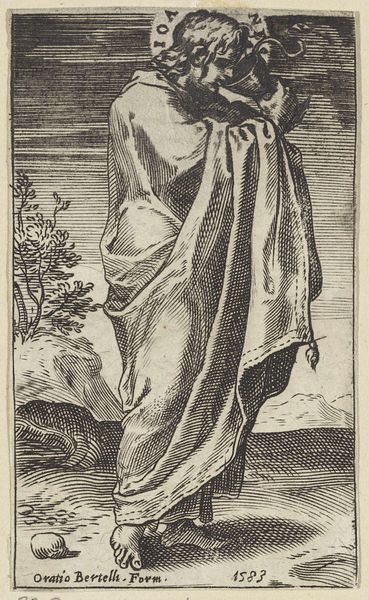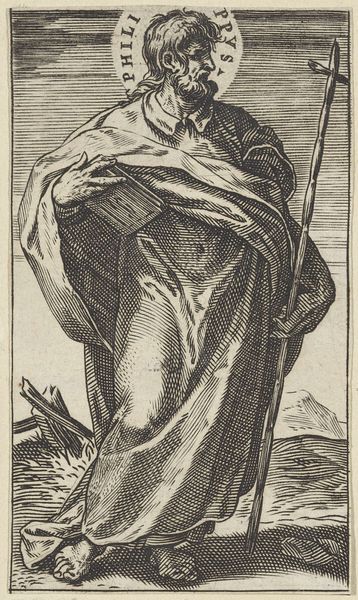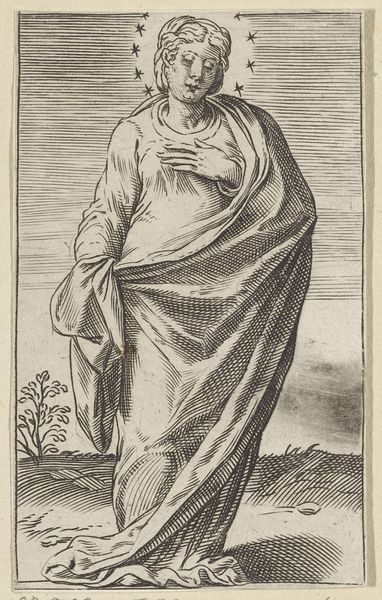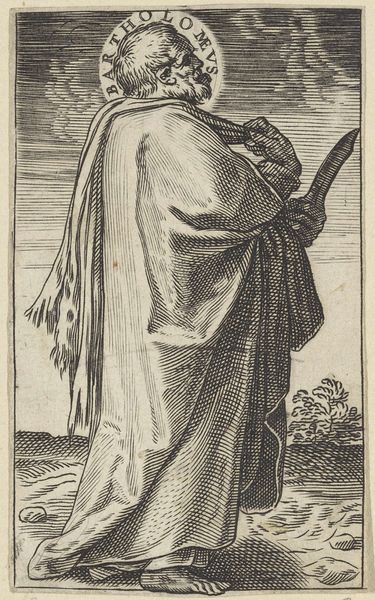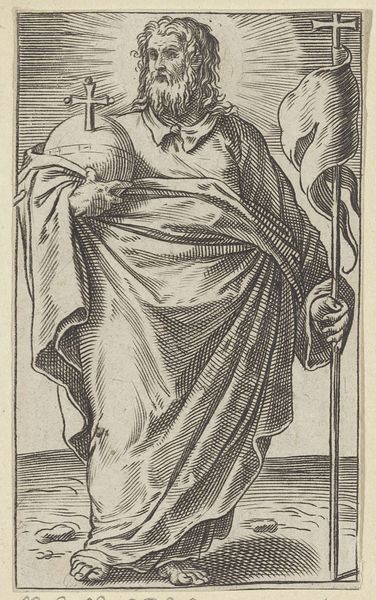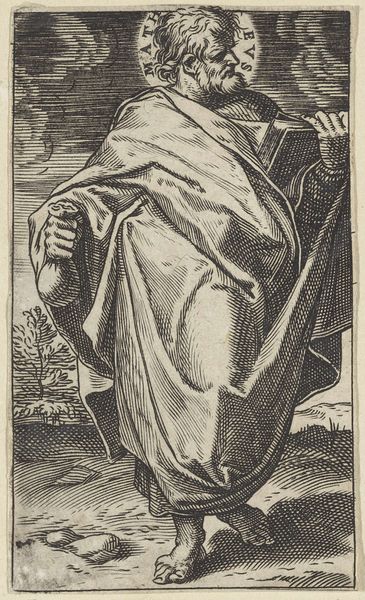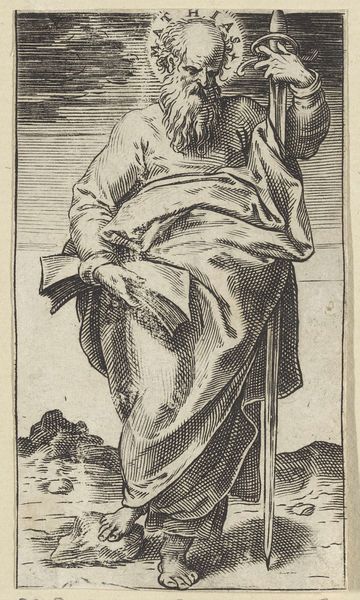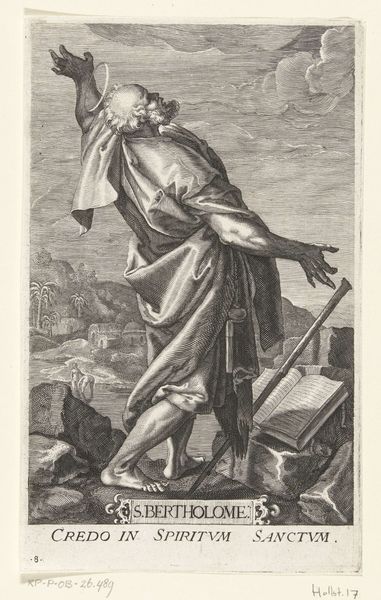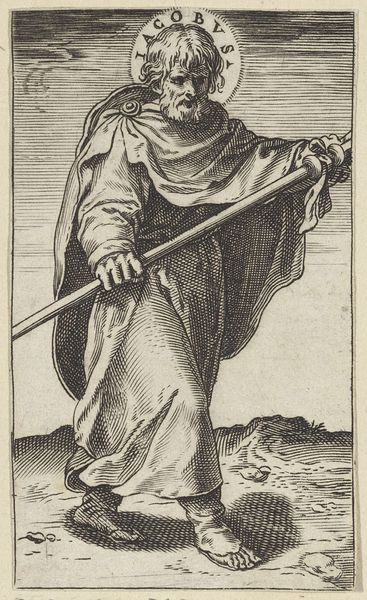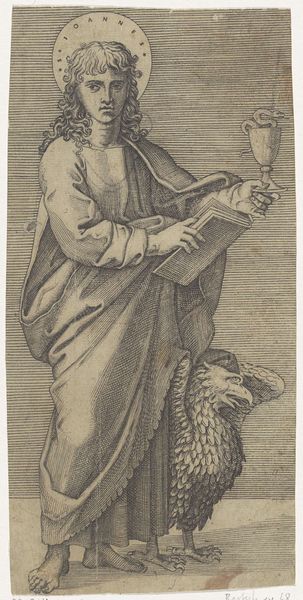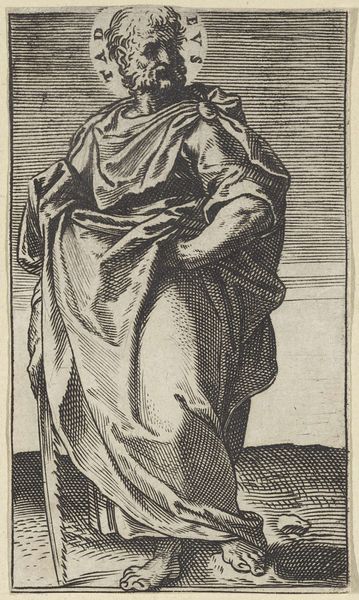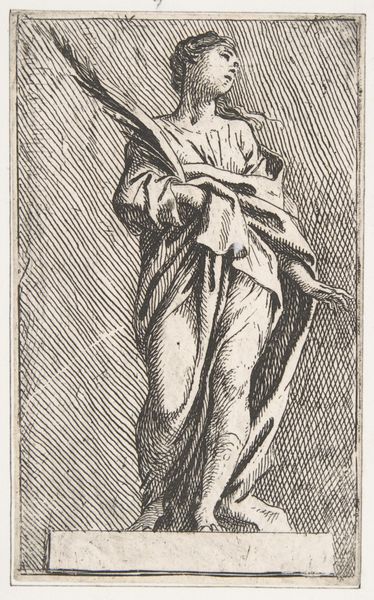
print, engraving
#
portrait
# print
#
pen illustration
#
pen sketch
#
pencil sketch
#
figuration
#
pen-ink sketch
#
line
#
pen work
#
sketchbook drawing
#
portrait drawing
#
history-painting
#
italian-renaissance
#
engraving
Dimensions: height 108 mm, width 63 mm
Copyright: Rijks Museum: Open Domain
Curator: Let's discuss "Apostel Andreas met een kruis," an engraving by Agostino Carracci, dating back to 1583. It resides here at the Rijksmuseum. Editor: It strikes me immediately as somber. The density of the lines creates such a heavy atmosphere. You feel the weight of the cross he carries, physically and symbolically. Curator: Absolutely. Carracci produced this print in a period of Counter-Reformation fervor. Depicting Saint Andrew, the work serves as a visual reminder of faith and sacrifice. It reinforces the Church's narrative. Editor: Notice how the composition focuses so intently on Andrew. The severe lines define his aged features. The etched drapery swirls dynamically. The chiaroscuro formed is masterfully rendered through crosshatching, almost obscuring everything beyond him, emphasizing his figure. Curator: Carracci comes from a family known for reinvigorating Italian art. The image clearly aligns with the religious and didactic functions promoted in post-Tridentine art. Printmaking made such messages available to a wider public. Editor: And the cross—its raw texture stands out starkly against the finer detail elsewhere. The halo, almost an afterthought in its rendering, illuminates his burden. His gaze downward projects both piety, as well as suffering. Curator: Exactly! Remember that the figure of Saint Andrew became vital in the iconography surrounding martyrdom. Artists like Carracci amplified such imagery. It served specific devotional purposes and was certainly about the religious conflicts during this period. Editor: Examining the work solely for the intrinsic elements provides such clear visual language about strength in hardship. While understanding its role expands that reading, without taking away from the central narrative elements within it. Curator: That’s a vital perspective. It bridges the historical with what makes this artwork such an example of Counter-Reformation art with all its historical considerations. Editor: Indeed. Examining the structure shows how that all resonates within the historical moment.
Comments
No comments
Be the first to comment and join the conversation on the ultimate creative platform.
